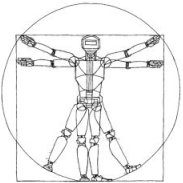Robotics: Science and Systems I
The Stability of Point-mass Hoppers with Varying Morphology and Minimal Feedback
Justin SeipelAbstract: In this paper we examine the stability of a class of simple three-dimensional point-mass hoppers, which have minimal feedback. These hoppers, with varying leg numbers, are representative of both animal and robotic runners: singlestance- leg runners such as humans, birds, and some monopod robots; double-stance-leg hoppers such as kangaroos; and triplestance- leg runners like the cockroach or the robot RHex. These models have minimal feedback: only liftoff and touchdown events are sensed and, during flight phases, legs are positioned in a predetermined manner for the ensuing touchdown. Only one model, that corresponding to cockroach running, is actuated, and then only in a feedforward fashion. The remaining hopper models form a subset of energy conserving, piecewise-holonomic point-mass models for running. Categorically, we show that the model for single-stance-leg runners is unstable; whereas the double-stance-leg and triple-stance-leg hopper models are stable. We abstract three ideas that warrant further study: 1) runners with multiple splayed legs are naturally more stable since they can produce sufficient corrective forces in all directions to perturbations. However, 2) In some systems with specialized hip joints, passive reactions to perturbations generated at the hip can be stabilizing. This scenario may be present in RHex. Finally, 3) A RHex and cockroach version of the three-stance-leg model are fundamentally different in how their individual legs act to produce net body forces, which affects their respective stability properties.
Bibtex:
@INPROCEEDINGS{ Seipel-RSS-05,
AUTHOR = {Justin Seipel},
TITLE = {The Stability of Point-mass Hoppers
with Varying Morphology and Minimal Feedback},
BOOKTITLE = {Proceedings of Robotics: Science and Systems},
YEAR = {2005},
ADDRESS = {Cambridge, USA},
MONTH = {June},
DOI = {10.15607/RSS.2005.I.040}
}
